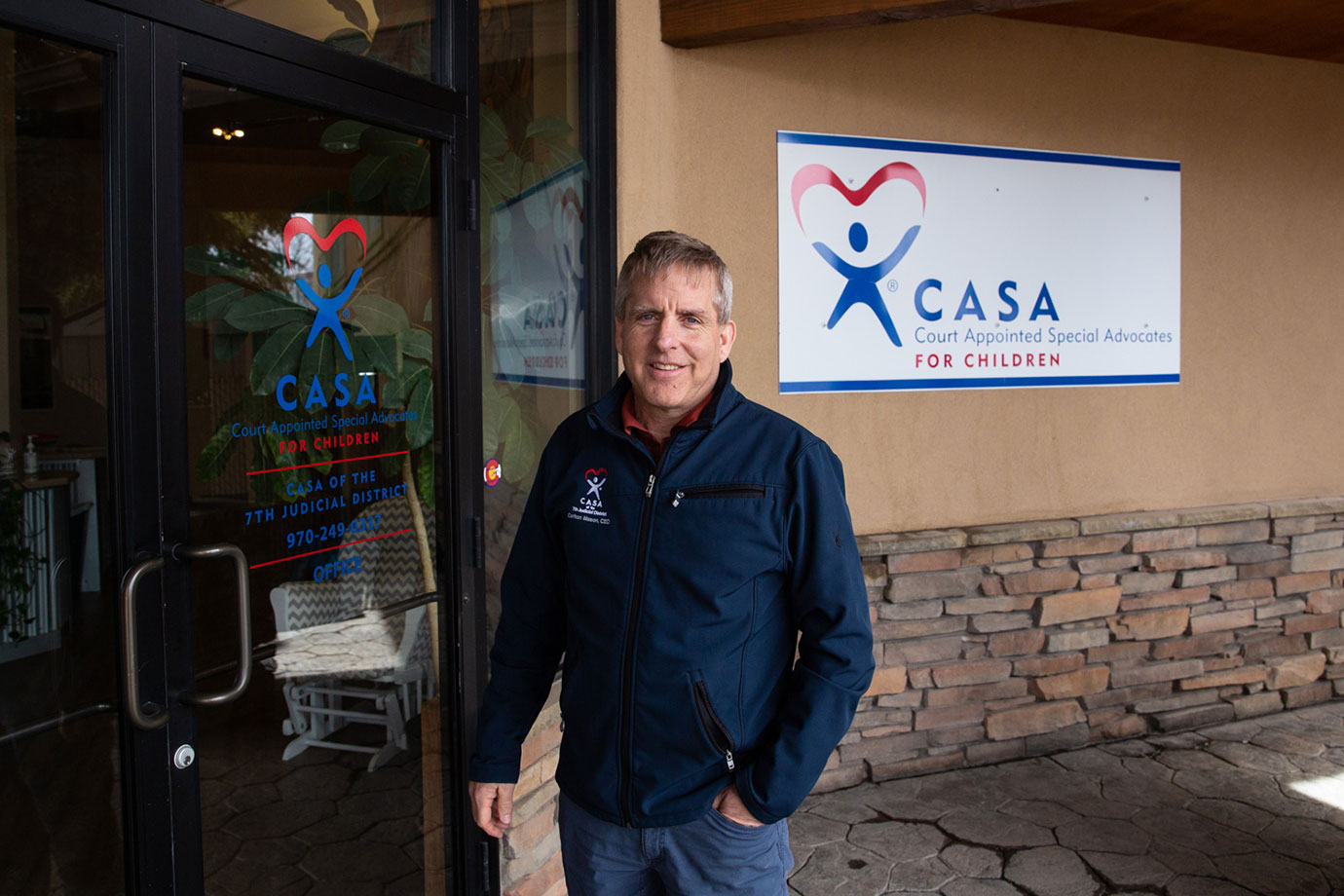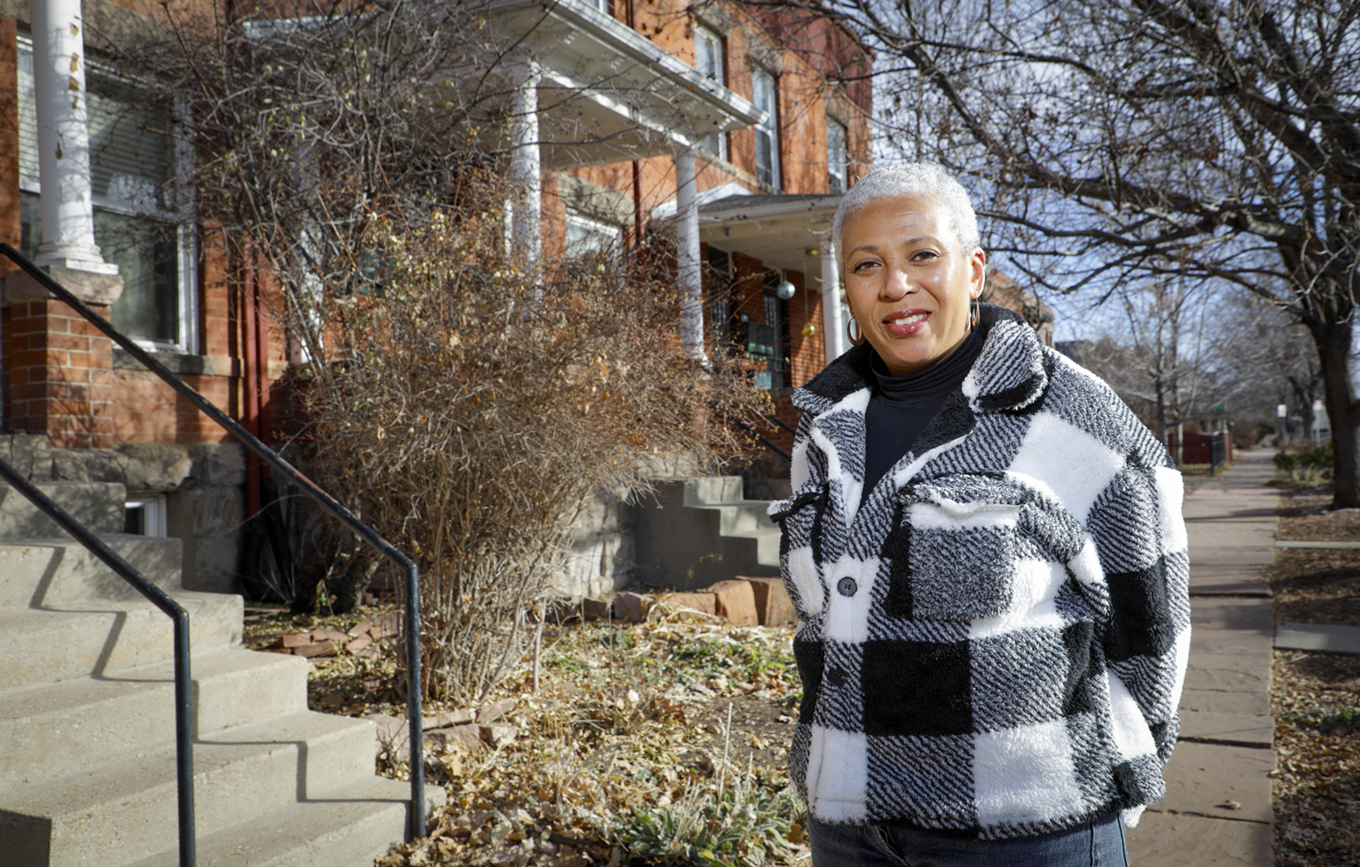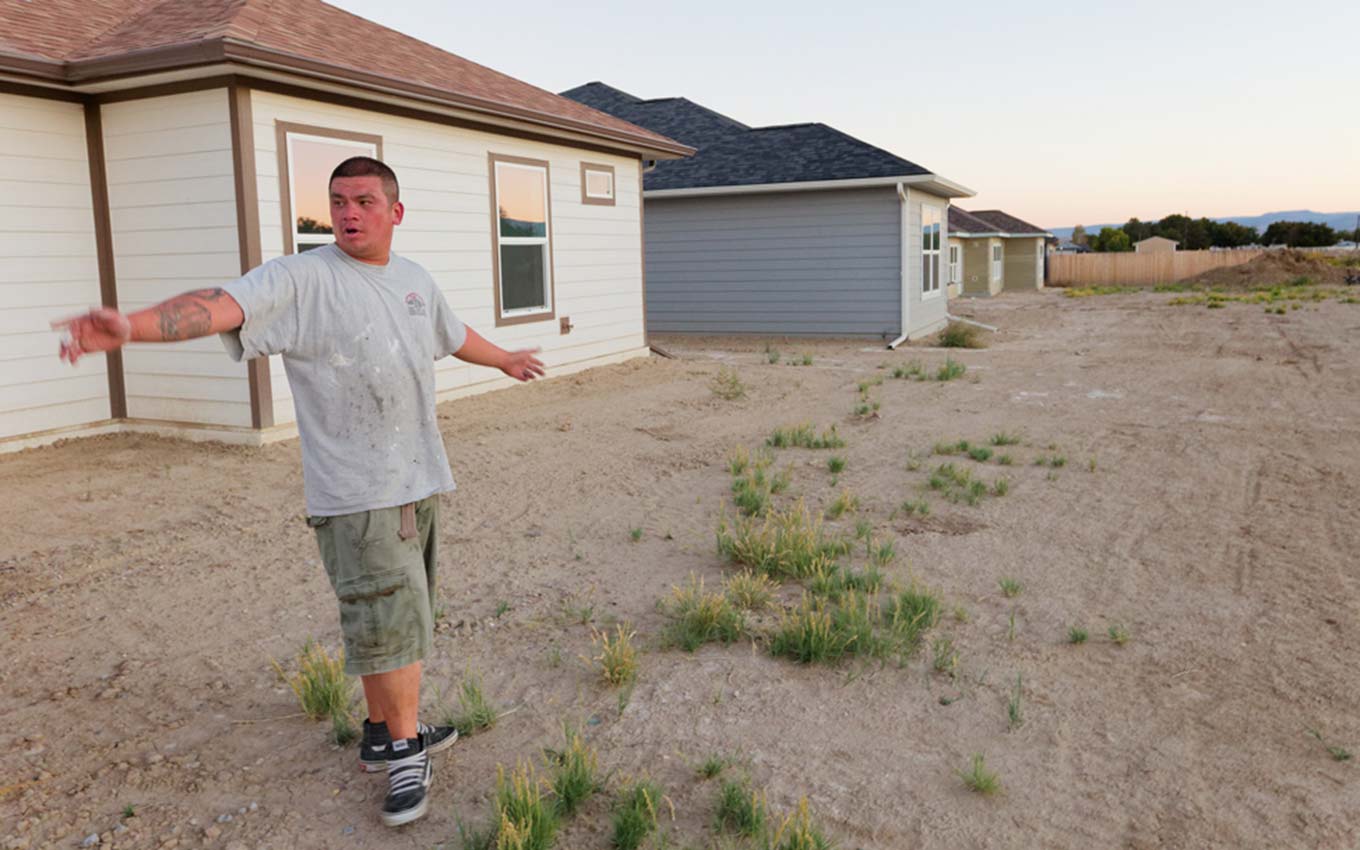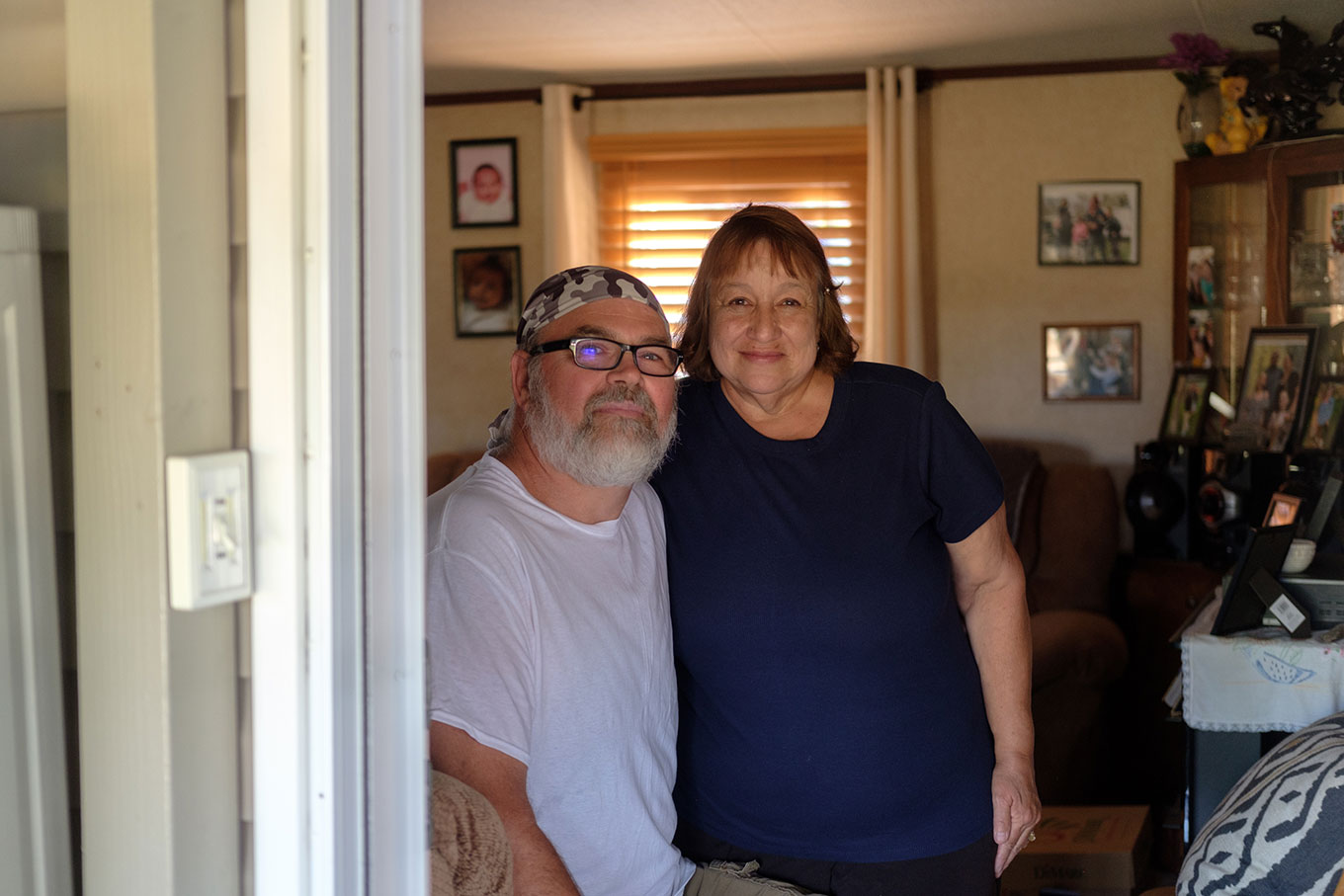Broken glass sparkles in the sun across a stretch of weedy land between a gully and a highway bypass not far from downtown Montrose in western Colorado.
When Carlton Mason stands in the middle of these nondescript 15 acres, he doesn’t see emptiness. He envisions the next big step in his decade-long attempt to make life easier for youth who have spent the better part of their childhoods in foster homes.
Mason points to where there will be 45 homes, clustered in trios with front porches and walking paths between them. Most of those will be for young people between the ages of 18 and 24 who are struggling to find their way into adulthood after unsettled and often traumatic childhoods. Other interspersed housing units will be for older adults who don’t have stable housing. Three units will be set aside for those experiencing a short-term housing crisis.
A community center will tie the development together. Along San Juan Avenue, a bus stop will be located for easy access to public transportation. To the north, recreation paths will wind through a dry wash on eight acres of the property that will be placed in a conservation easement.
Mason is the director of the Court Appointed Special Advocates (CASA) of the 7th Judicial District. Appointed by judges, the advocates are specially trained volunteers that represent youth and children in family or juvenile court proceedings.
“I am not a therapist. I am not a social worker. I just really enjoy trying to solve the ancillary issues that are not being addressed when kids step out of the foster system and they are not ready for what’s coming,” said Mason as he looks over the area where construction is slated to begin this May. The development will be Colorado’s first intergenerational supportive housing community.

Mason with architectural renderings for The Village at San Juan, the forthcoming CASA supportive housing complex in Montrose.
“This is just such a creative solution-based concept. I think it is brilliant,” said Jenny Bender, executive director of Colorado CASA, the state organization that oversees 18 local CASA programs. “Helping those who emancipate is one of our greatest needs in every CASA program.”
The idea for the intermingled housing project recently moved out of the realm of wishing and into reality when the Montrose City Council formally approved the development plans. Funding for the $10 million project is coming from a mix of 14 grants, loans and donations. A local partnership between the Montrose Area Agency on Aging and CASA is helping make the project viable by providing services for the older residents in the development.
“This has the potential to be a really beautiful thing. Most of these youth have not had significant older figures in their lives. And these older adults have found themselves in a dire situation,” said Eva Veitch, director of the Montrose Area Agency on Aging. “I am optimistic about what may happen when these people are together in a project like this.”
Mason’s pursuit of such a project may be related to the fact that he worked in the construction industry before he pivoted to human services. Housing was on his radar when he took a job with CASA of the 7th Judicial District a decade ago as a volunteer coordinator. For the past nine years, he has served as the organization’s executive director.
CASA’s mission is supporting kids who have been abused or neglected and can benefit from the guidance of adult volunteers as their cases move through the court system. That aid officially ends when court cases are closed or when kids turn 18 and age out of the foster system.
On Mason’s watch, the 7th Judicial District program has vastly expanded that core CASA mission, so much so that the Montrose CASA added a doing-business-as title, Youth & Family Advocacy Services.
When Mason joined the organization, the Montrose-based CASA was jammed into 800 square feet of space and was scraping by on a $180,000 annual budget. A line of credit was necessary to keep the organization going. The mission at that time hewed strictly to the basic CASA mission of providing a voice in court for children who have experienced abuse or neglect, and overseeing visits between separated parents and kids.
Today, the Montrose-based CASA has a $1.4 million budget and a full menu of programs. The cheery, 10,000 square-foot CASA office on a downtown corner is home to sessions with visiting therapists, a space and staff for supervised visitation for separated families, parenting classes, family dynamic classes for Spanish speakers, space to hang out, a smoothie bar where young people can work and practice job skills, and a program called Pathways to Success that offers help with money management, employment, education and housing.
“We have to be very resilient with what we offer,” said Aixa Powell, PhD, who, in her role as chief research officer for the Montrose CASA, tracks how programs are working and looks for gaps in needed services, including housing.
When CASA decided to tackle the housing problem five years ago, a monetary quilt of grants, loans and donations was pulled together to build the first CASA-owned townhouse, which had eight units. That came about after Mason realized that 10 young people who had aged out of the foster care system were either experiencing short-term or chronic homelessness. That complex quickly filled, and a second six-unit housing development was built in Delta three years later.
“It was nerve-wracking. We were doing something that we didn’t know how it would work,” Mason said. “No CASA in Colorado had done this then.”
Now, Arapahoe and Jefferson counties have supportive-housing services, and several more counties are looking at adding CASA-based housing, Bender said. But none have the CASA-owned, intermingled-age kind of housing project that will be known as The Village on San Juan.
Mason envisions that village providing support for young adults who may have never learned basic skills like setting a budget or preparing a healthy dinner, and who might occasionally need a bowl of chicken soup when they are ill. In turn, the teens and young adults may have car repair skills, be willing to run errands, or share computer skills with older neighbors who might not be tech savvy.
Powell, who is licensed as a psychotherapist along with having a law degree, hopes that the residents will support each other much like a multigenerational family might—sharing skills, swapping needed items, occasionally preparing meals together, and possibly making holidays less lonely.
“Loneliness is a main gate for depressive behaviors,” she said. “Socialization is so important. If you have someone next door who can lend you a hand, that is important.”
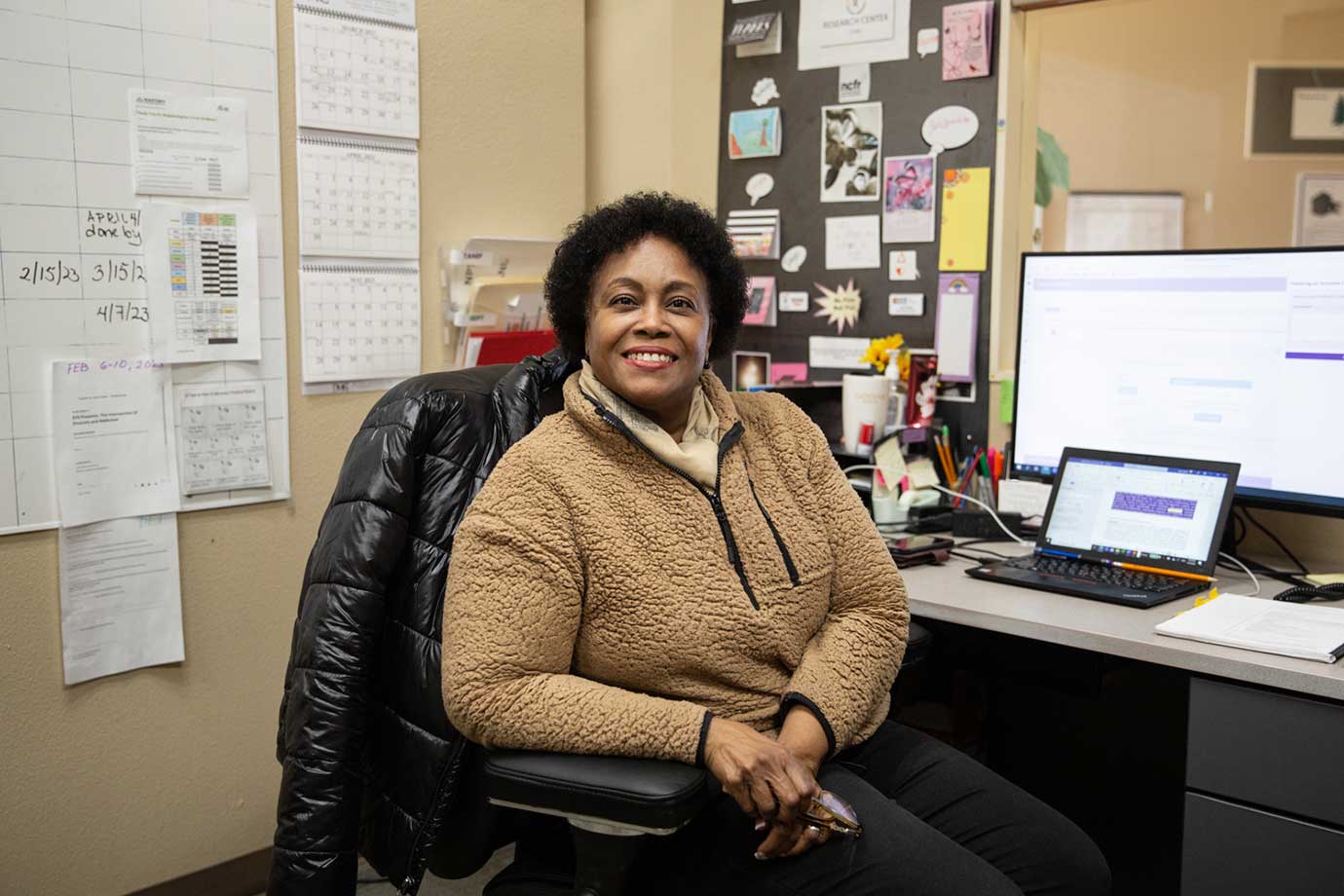
Dr. Aixa Powell in her office.
That vision and The Village at San Juan grew out of lessons learned with CASA of the 7th Judicial District’s first two supportive housing units. “At first, we thought if we give them a nice place to live, the other problems would go away,” Mason said.
It didn’t happen like that. In fact, Mason came up against an extremely painful reckoning when one of the young tenants died by suicide within the first six months of the inaugural housing unit opening. The call Mason received in the middle of the night still haunts him, and drives him to do more.
“That was a critical moment when we realized housing was a critical component, but not all that was needed,” he said. “We realized that we have to focus on these kids to keep them safe and keep them alive, and let them know there are people out there who care about what they are doing.”
That realization led to a tackle-every-problem ethos during a time that Mason and his team recognized was crucial for young people who have aged out of foster care without a family. Children and teenagers in the child welfare system are three times more likely to use drugs and twice as likely to become pregnant by age 19, according to CASA statistics. A third of them have chronic health problems and up to 80% have mental health issues. Only about 15% of young people leaving foster care are employed.
Dealing with those problems and adding stable housing is “an effort that is dirty and messy,” Mason said. “Success is hard to define. I never want anyone to think it’s all great. It’s beautiful, but it’s not all pretty.”
He gives examples of young tenants who have addressed drug addictions only to backslide months later. One young tenant landed a stable job and seemed to be on a successful path before she became pregnant and ended up in an abusive relationship.
There are also success stories, though. Currently, there are five babies living with parents in the two supportive housing units. And of the 18 young adults who were housed in the Delta and Montrose developments last year, 93% have remained employed for most of the year. None had any justice system involvement.
James McDonald, a 19-year-old aspiring musician, is one of them. McDonald lived in more foster homes than he can remember in the decade after he was removed from his mother’s care in Las Vegas. That disruptive cycle ended in Montrose a year ago when he aged out of the foster system without a strong connection with either his biological parents or any other family.
McDonald now works in an apprenticeship with a local music-mixing business—a job that Mason helped him find. He lives on his own in a small apartment in the CASA complex just east of downtown Montrose.

James McDonald (r.) at his music apprenticeship with La Familia Music Group in Montrose. Enshiroh, a recording artist and audio engineer, assists him.
“It kind of caught me by surprise when I got out of foster, some of the things that were dropped on me,” McDonald said. “I hadn’t been doing my own paperwork. I wasn’t taught to bargain-shop for groceries, things like that.”
Now, when McDonald isn’t in his apartment or at his apprenticeship job, he spends part of every day at the large, open Walk-in Youth Access Center in the CASA building. There, he can hang out with friends he can relate to; they, too, have been in the foster system.
On one recent weekday afternoon, a pizza party was underway in a room brightened with shelves of artwork created by CASA youth. A small stage took up one corner for open-mic nights and events geared for LGBTQIA+ teens and young adults.
Winston’s Smoothie Bar spans another corner, and it was hopping during the pizza party. Rowan Miska (they/them) bustled about, blending fruit smoothies and handing out cookies that they spontaneously decided to bake for the occasion. The smell of cinnamon and chocolate permeated the center, making it even more inviting.
Born in Delta, Miska, 22, said they had been periodically unhoused and unemployed after struggling to find their way. They ended up at the Montrose CASA facility when a school teacher directed them there for help.
“This is the best job I’ve ever had,” Miska said of their position at Winston’s. “I’m also working on my GED now.” Miska, a member of the Lakota tribe, hopes to someday relocate to and work on the Pine Ridge Indian Reservation.
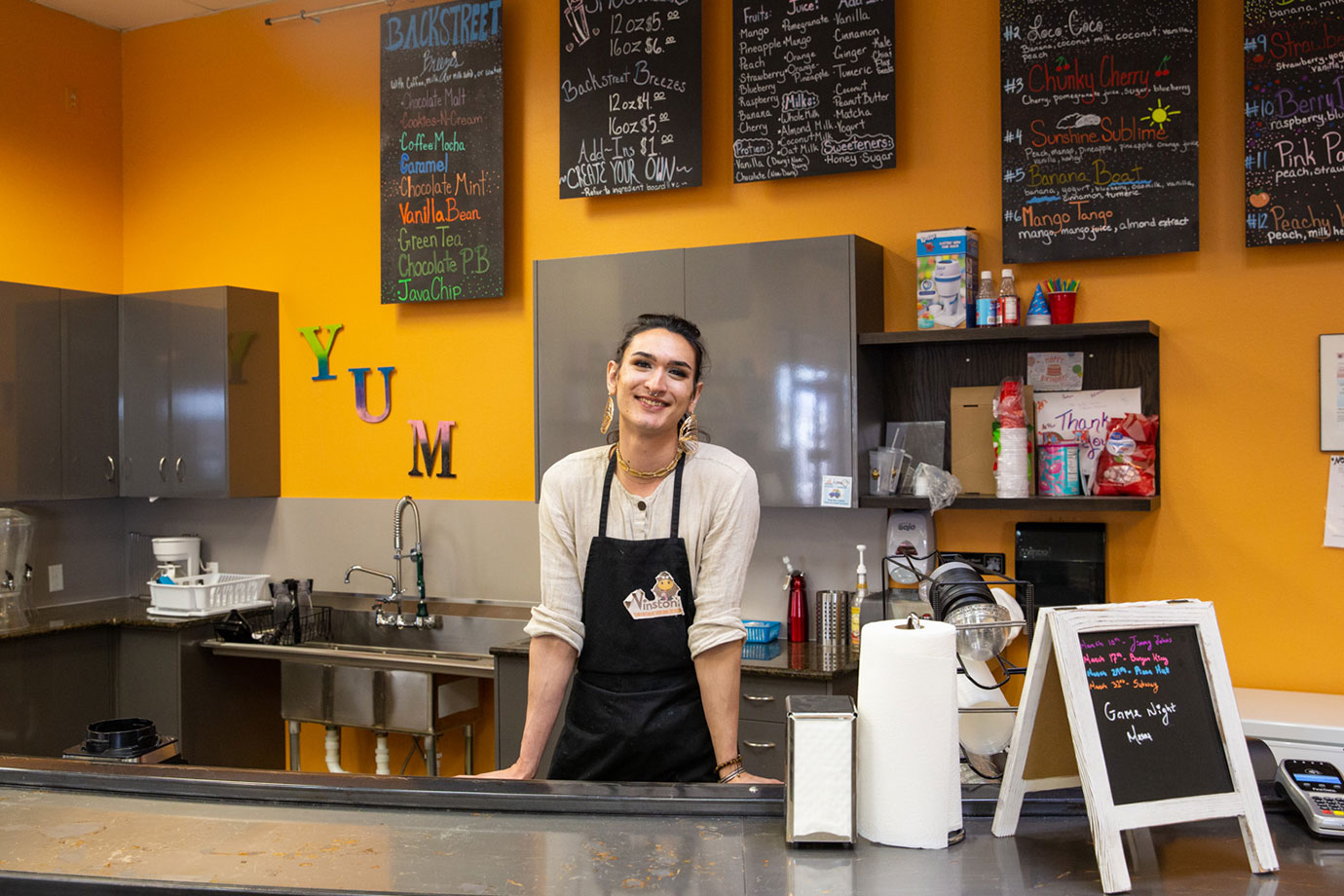
Rowan Miska at work at Winston’s Smoothie Bar.
McDonald is equally enthusiastic about his future.
“This place has changed me into the person I am now,” he said. “It has been so good for me.”
While stable housing, counseling sessions and the occasional smoothie help, Mason has been at work on other far-reaching efforts. He recognized that intergenerational wealth—the kind of parent-to-child financial infusion that helps many young people go to college, buy a home and generally get their feet on the ground—was missing for most of the young people in the Montrose programs. He and his board floated a statewide idea for addressing that challenge.
Mason called his local elected officials, hired a lobbyist and, through a pilot initiative, showed how financial assistance delivered through a state-matched savings program might help even the playing field for youth without family resources. The Financial Literacy Exchange Program (FLEX) was passed into law in Colorado last summer and was launched in January by the Colorado Division of Housing.
The program rewards residents in subsidized housing who work and pay 30% of their income towards rent. The FLEX program is designed to help participants increase their earned income, become financially stable and, ultimately, reduce their dependence on government assistance.
Mason said an 18-year-old who lives in CASA housing and who set up a FLEX account as part of the pilot program already has $13,000 in savings. The tenant managed that with the help of a CASA-contracted financial advisor. Financial counseling is a requirement for tapping into the state-matched funds.
The tenant enrolled in the program told Mason he has calculated that he and his wife can save $30,000 by the time they leave supportive housing if they both continue to work.
“It’s unbelievable what that kind of help does to young people,” Mason said.
Another of Mason’s newest endeavors is the hiring and training of four peer-support specialists. The people he hired are tasked with helping their peers develop life skills. In their first months on the job, the peer specialists have taken on tasks that include accompanying one CASA youth resident to Colorado Mesa University to navigate the enrollment process, giving another one rides to therapist appointments, and helping others with job interview skills.
Bender of the statewide CASA program calls the Montrose conglomeration of programs “a shining star” in the state and nation when it comes to creatively meeting the needs of youths under or leaving CASA oversight.
Mason calls it a work in progress. He said he is constantly having to reevaluate and tweak all these efforts. He has had to change policies based on feedback from youth in the various programs. He said he knows there will be many more iterations going forward.
“Not everything works,” Mason said. “But we have the freedom to try. And we do try.”

After years of living in residential youth services housing with over a dozen other boys, McDonald values having his own space in his CASA apartment to work on hobbies that include art and Gundam plastic modeling kits.
